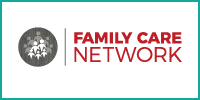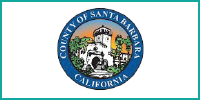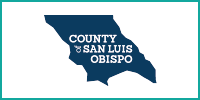If you want to open a bank account, you'll want to read this roadmap. We'll cover the 7 essential steps to get your account up and running, whether you want to open an account online or in person.
I am frequently asked "what is the easiest way to open bank accounts?"
Answer: Almost all banks follow the formula below to open bank accounts.
Open Your Bank Account Step 1: Choose an Institution
You may have already done this. If not, shop around. What type of account do you want? A savings account? A free checking account? Should you use a credit union? See who has the features you want and who offers competitive rates. Remember that you might do business with this institution for years, and it's likely that you'll use several of their services over that time.
See page 2-5 for information on how to choose a bank as well as a comparison between Chase, Bank of America, and Wells Fargo
Open Your Bank Account Step 2: Go to the Bank or Website
The easiest way to get this done is to find the institution’s website. Search for the bank on Google, or visit a website listed on the bank's marketing materials. The advantage of opening accounts online is that you can do it at any time, from anywhere. However, if you're only comfortable opening a bank account in person you can simply show up at the branch during business hours. Be sure to bring identification and any initial deposit that's required.
Open Your Bank Account Step 3: Pick the Product You Want
Any financial institution will have a variety of account types and services that you can mix and match. They’ll all have fancy names that you may need to learn, but they're basically the same products you'll find elsewhere: checking accounts, savings accounts, and loans. Pick the option that has a mix that is right for you. For example, if you'll keep a low balance in the account, be sure to use an account that keeps fees at a minimum (avoid the accounts that require a large balance in order to qualify for fee waivers).
When working online, you may have to drill down to the product that is right for you. You might click “Open an Account”, and then click “Checking”, and finally “Free Checking”. If you open your accounts in person, you can just chat with a banker who will help you find the best account for your needs.
Open Your Bank Account Step 4: Provide Your Information
In order to open an account, you must provide some information to the bank. They do not open bank accounts without certain details about you. This is to protect them and to comply with a variety of regulations. You’ll need to provide simple details like your name and birthday, as well as identification numbers (in the U.S. this is most likely your Social Security Number). You should also be prepared to provide a valid government ID (such as a Driver’s License).
If you’re doing this online, you’ll just type the information into a textbox. If you open your accounts in person you'll hand your IDs over to the banker, who will probably make photocopies.
Open Your Bank Account Step 5: Agree to Terms
You’ll have to agree to abide by certain rules and accept responsibility for certain actions. When you open an account at a bank, you form a relationship based on a very important subject – your money. Therefore you should know what you’re getting into. If you open bank accounts online, you complete this step by clicking an “I Agree” (or similar) button, and performing the next step.
Open Your Bank Account Step 6: Print, Sign, and Mail (If Applicable)
If you open bank accounts in person, this step does not apply. Skip to Step 7. If you are opening an account online, you’ll probably have to print, sign, and mail a document to the bank before the account is opened. Some banks may use electronic disclosure and consent that is legally binding, but many still won’t open bank accounts unless you complete this step. Until they receive the documents, your account is not active.
Open Your Bank Account Step 7: Congratulate Yourself!
Congratulations, you are the proud owner of a new account.
Now, you’ll just need to wait a few days to a few weeks for the bank to process your paperwork (the process is getting faster and faster -- so you might only need to wait a few minutes). Then, they will mail you anything you need for the account such as checkbooks and debit cards.
Opening bank accounts is really quite easy as long as you know what to expect. Just be ready to complete the required steps.

Choosing a Bank
How to Find Banks That Fit Your Needs
Choosing the best bank for your needs is easy. First, you have to figure out exactly what you need from a bank. Once you know what to look for, you can quickly evaluate the competition and end up with the best bank account out there. This page offers a guide to choosing the right bank for your needs, and offers some ideas for starting your checklist.
What will you do?
The first question to ask yourself is what you want to do with your bank account. Do you want to put money in there periodically and watch it grow? Will you move money in and out quickly? You need to know what your banking behavior will be like in order to find the right bank.
How will you do it?
Next, get an idea of how you prefer to do your banking. If your schedule doesn’t work with most bank schedules, the best bank might just be the one that’s open at convenient times or is part of the CU Service Center network. If you’re a web-savvy customer, look for the banks that make it easy to do your dealings quickly and efficiently with the click of a mouse.
What’s it worth to you?
Free checking accounts get a lot of hype. They get people in the door. However, free may not always be the best thing for you. If you value certain services or conveniences, you may be willing to pay for them. Once you get ahold of fee schedules from competing banks, consider if it’s really going to bother you to pay a few bucks each month for that “gotta have it” feature or service. Maybe it is, maybe it isn’t.
Get Opinions
Finally, remember to ask other people for opinions. Ask your friends where they bank, and how happy they are. Finally, some of the blogs out there have extensive information on customer experiences in banks. When searching online, just remember that negative experiences will be more common than positive ones. People upset at the bank are motivated to spread the word – but happy customers often don’t even realize that they’re happy.
Shop Around
Once you know what you want, start shopping and comparing. You can use the list below to start a checklist. Most institutions will have everything you need on their Website. If not, call (or walk in) and ask – you'll get a preview of the customer service. Look for fee schedules, rate sheets, and hours of operation while you’re hunting online.
Be sure to limit your search to insured institutions that can keep your deposits safe. Banks should be FDIC insured and credit unions should be NCUSIF insured.
Ideas to Get You Started
Try the list below to get the process started. For example, if you:
- Have a tight schedule…
- Find a bank with convenient location and flexible (or weekend) hours, or that allows ATM Deposits.
- Want to earn the highest interest rate on your cash…
- Consider an internet bank account or reward checking account. They pay the best interest rates for deposits.
- Feel more comfortable face-to-face…
- Search out community banks and credit unions that are easy for you to get to.
- Need to get a loan…
- Check the newspaper and bank websites for special offers (like no closing costs on a mortgage). Don’t forget to look at local credit unions.
- Write lots of checks…
- Get the free checking option where available.
- Hate licking envelopes and paying bills…
- Find a bank that offers free online bill pay.
- Use ATM’s frequently…
- Use a local bank with an extensive ATM network. Or, get into an institution that will rebate foreign ATM fees. Be realistic about the “requirements” for getting this done. Are you really going to provide the bank with ATM receipts?
- Tend to forget how much money you have in the bank…
- Get a checking account with an inexpensive overdraft protection plan. If possible, go for the overdraft line of credit to save money.
- Want a one-stop-shop…
- Look for a bank or credit union that has everything you need: auto loans, mortgages, deposits, CDs, other investments, and more.
Credit Unions vs. Banks
In the United States, credit unions are not-for-profit organizations that exist to serve their members rather than to maximize corporate profits. Like banks, credit unions accept deposits, make loans, and provide a wide array of other financial services. But as member-owned institutions, credit unions focus on providing a safe place to save and borrow at reasonable rates. Unlike banks, credit unions return surplus income to their members in the form of dividends.
Let’s drill down to the services you need most and see how credit unions and banks compare:
- Interest-yielding accounts – Because of their not-for-profit business model, credit unions generally pay a higher interest rate on savings and CDs than banks that have to pad their profit margins.
- Checking account fees – Credit unions return profits to owner-members, which means account fees can be kept to a minimum. You’re likely to enjoy free checking at a credit union without all of the account restrictions the big banks have. And you know all of those “nuisance” fees banks charge for things like direct deposit, transfers, wires, and balance transfers? You’re just not likely to find them at your local credit union.
- ATM accessibility and fees – Big national banks have more ATM and branch locations, that’s for sure. That can be an important for convenience and helps avoid fees associated with using another bank’s ATM. But just like banks, credit unions are connected to national ATM networks for easy member access just about anywhere – and many credit unions reimburse the ATM fees you may be charged.
- Customer service – Here’s a big difference. Giant banks may make you navigate through complicated and endless voicemail trees, automated email responses and foreign customer service call centers, but because credit unions are small businesses, it’s often easier to get person-to-person service.
- Online manageability – For the past several years, big banks have excelled in this category – you can now complete just about any transaction online – but credit unions are catching up. Large banks have massive IT departments, and in fact, would prefer you do your banking online: it helps them reduce headcount and overhead. Credit unions are a bit more old fashioned and people-centric, so it depends on how you like to do business. Credit Unions should at least have the basics though: account balances, transfer capabilities and online loan payments.
- Insured deposits – Bank deposits are insured up to $250,000 by the FDIC. All federal and most state-chartered credit unions offer equivalent deposit insurance through the National Credit Union Share Insurance Fund. When it comes to secure deposits, it’s a draw between big banks and credit unions.
- Loans – This is perhaps the biggest benefit of a credit union membership. They really knock the ball out of the park when it comes to loans. Because of its unique ownership structure, a credit union doesn’t have to abide by loan restrictions and qualifications mandated by some far-away corporate home office. And being a not-for-profit organization means a credit union doesn’t have to charge exorbitant interest rates, either. It’s simple; credit union loans are generally cheaper.
How Free Checking Really Works
Before you sign up for a free checking account, you should understand how free checking works. It is also important to understand why banks offer free checking.
The Free Checking Offer
Banks offer free checking as a way to get attention and save you money. They usually require that you make a small deposit in order to open the account, and you qualify for free checking. There should not be any annual fee or low balance fee on a free checking account. Some banks also offer free checks for life with free checking.
Since the financial crisis, it's become harder and harder to find free checking. However, it still exists. Small banks and credit unions are especially likely to offer the service, and you can even earn interest with some online checking accounts.
Free Checking Features
To make sure you get the good deal on a free checking account, look around for a free checking offer that has the following:
- No Low Balance Fees
- Free ATM and/or Debit Card
- No charge for ACH and Direct Deposit transactions
- Free online access to your account
- Unlimited monthly check writing
- No minimum check writing amount
Bonus Free Checking Features
For the best in free checking, see if you can find free checking that also offers:
- At least one free book of checks (or free checks for life)
- Free online bill pay
- Overdraft protection plans (watch out for the costs!)
- No charge to use ATMs outside the banking family
- Reimbursement of ATM fees charged to you by another ATM
Free Checking Drawbacks
It is important to know what you are not getting when you use a free checking account. Free checking typically doesn’t pay interest on your money. This is not unique to free checking – most checking accounts don’t pay much. However, you can link your account to a higher yielding vehicle like an internet bank account and earn interest on the cash you’re not using.
It's also possible to find free checking accounts that pay interest. Reward checking accounts pay more than most savings accounts, but you have to jump through some hoops.
Another service you might miss is the ability to view your checks after they’ve been paid. Some people like to see a copy of the actual check and the payee’s signature. Free checking usually doesn’t offer this, although a few free checking accounts put images online. My opinion is that you don’t need it, especially for personal accounts. There are plenty of ways to track payments – and you can always order a copy from a free checking account if there’s a particular check you want to track.
Finally, you’re giving up perks like free Stop Payments and Cancelled Check Return when you use free checking. Because I rarely use these services, I do not think you are missing much. However, if your situation is different you may want to shop around.
If you keep a relatively small balance in your checking account, the free checking accounts will probably cost less than an account with premium services. If you ever need to use those services, just pay the small fee in the free checking account.
Why Banks Offer Free Checking
Banks offer free checking as a way to drum up new business. If you go to a branch and ask to open a free checking account, they will be glad to help you. However, they will also try to capture other assets and business from you.
Free checking accounts get customers in the door. Therefore, you shouldn’t be surprised if you get a friendly sales pitch while you’re opening your free checking account.




